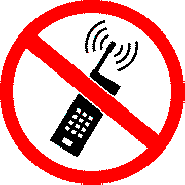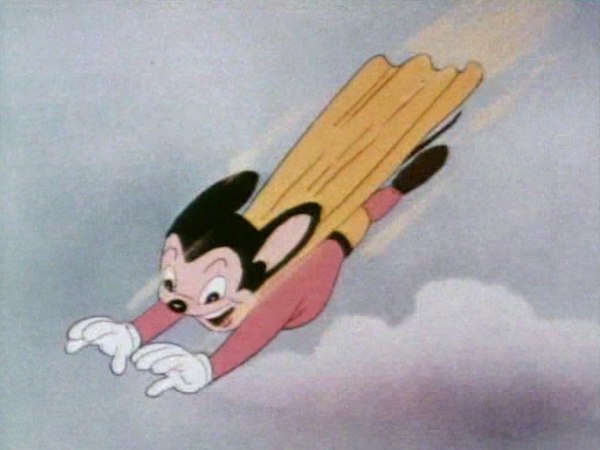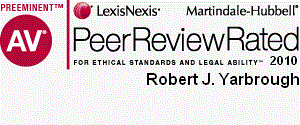Newsletter Issue 8 - October 2009
In this issue:
Ringtones freed by district
court.
Hope for the patent system?
The Mighty Mouse saga
Free patent search resources
Ringtones freed by district court.
by Adam Garson
In our July newsletter, we posed the question of whether the American Society of Composers, Authors, and Publishers (ASCAP) was crazy (tongue in cheek, or course). You may recall that ASCAP was seeking public performance licensing fees for ringtones. ASCAP demanded royalties for every transmission and sounding of a ringtone because each was a public performance of a copyrighted work. In May 2009, Verizon Wireless (Verizon) filed a motion for summary judgment arguing that that the transmission and playing of ringtones was not a public performance.
Since publication of our newsletter, the court in In re Application of Cellco Partnership D/B/A Verizon Wireless, Opinion & Order, 09 Civ. 7074 (S.D.N.Y. October 14, 2009), decided in favor of Verizon, as predicted. The court held that transmissions of ringtones to individual customers were not "public" performances because there was neither a nexus between the transmission and a performance of a ringtone, nor was there a perception of a performance by any recipient of the transmission.
ASCAP also maintained that the ringing of a ringtone constitutes a public performance for which Verizon was either directly or secondarily liable. The Court made short work of that argument, noting that the Copyright Act exempts performances for works within the "normal circle of a family and its social acquaintances" or for which there was no expectation of profit arising out of the performance. Copyright Act § 110(4). Clearly, the sounding of ringtone, in the words of the Court, "fits comfortably within [the] statutory exemptions." Finally, the Court wrote that where there has been no primary infringement of the performance right, Verizon could not be held secondarily liable.
Hope for the patent system?
by Robert J. Yarbrough
There are more changes to the patent system to report, and we are
hopeful.
In our September newsletter, we told you about the 'count' system used by the PTO to measure the productivity of patent examiners. In the bad old days (that is, during the last few years of the last administration), examiners had incentive to churn patent applications by arbitrarily rejecting the applications, forcing the applicant to pay a new filing fee and to request that the examiner continue reviewing the application.
The new David Kappos administration at the PTO has taken steps to reduce incentives for the examiner to game the system by reducing the credit that the examiner receives for repeated reviews of an application. The Patent Office Professional Association (the patent examiners' union) has approved the changes, and those changes will go into effect.
The new administration is encouraging examiners to conduct interviews with applicants early in the review process to identify the issues involved and to identify patentable subject matter, avoiding the need for continued examination of the application. Look for more on early interviews in a subsequent newsletter.
The Kappos administration is also taking steps to reduce the utility of continued examination to applicants. In the past, examiners were required to review requests for continuing examination within two months. In the future, requests for continuing examination will be placed in line for review along with other applications. This increases the incentives for both the examiner and the applicant to achieve a full examination of a patent application early in the process.
We expect that soon most new patent applications will include an interview with the examiner, either in person or by telephone, prior to the first office action.
The Mighty Mouse saga
by Adam Garson
This week Apple Computer, Inc. (Apple) released a bevy of new products including a newly designed, multi-touch mouse, monikered "Magic Mouse". Interestingly, Apple just recently lost a trademark dispute with Man & Machine, Inc. (Man & Machine) over the "Mighty Mouse" trademark, which happened to be the mark used for Apple's previous mouse product introduced in 2005. Man & Machine was using the same mark since 2004 to identify a line of "rugged, hygienic, waterproof mice" used in hospitals and science laboratories.
To make matters more interesting, according to ars technica, Apple licensed "Mighty Mouse" from CBS, which owned the rights to the venerable cartoon character of the same name. Both Apple and CBS were the targets of Man & Machine's trademark infringement lawsuit. On October 6, 2009, the Patent and Trademark Office granted registration of "Mighty Mouse" to Man & Machine. The CEO of Man & Machine remarked in a press release that "Others have used the name MIGHTY MOUSE for their computer mice and have sought registration of that trademark, but now the United States government has spoken....We look forward to the continuation and expansion of the Mighty Mouse line of waterproof mice."
Apple's new mark, "Magic Mouse," was likely conceived in a rush to comply with the Patent and Trademark Office's decision to award the registration of "Mighty Mouse" to Man & Machine. Likewise, Apple has changed the name of its former "Mighty Mouse" product to "Apple Mouse." Apple may also owe Man & Machine considerable royalties for past infringement of its Mighty Mouse mark. The lesson here is when you adopt a mark for your product or service, do your homework first even if you are Apple.
Free patent search resources
by Robert J. Yarbrough
If you are tired of special .TIFF readers and downloading one page at a time from the PTO patent search website, you have two other free choices: Google Patent Search and Freepatentsonline. Google Patent Search is a great resource to quickly screen an invention against issued U.S. patents and published applications using familiar Google word searching, but the Google database does not appear complete. If you perform too many searches, the Google search engine will decide that you are a machine and throw you out.
Freepatentsonline is supported financially by intrusive advertising, which is annoying, and uses Boolean searching in several fields, which is useful. Freepatentsonline also allows searching of European Patent Office, World Intellectual Property Organization and Japanese Patent Office databases at one time, a significant benefit.
Both Google and Freepatentsonline allow download of the entire patent at once in .pdf format, which is a tremendous advantage over the PTO patent search website.
A caution about do-it-yourself patent searches: unless you are very familiar with reading patents and distinguishing one invention from another, you can become needlessly discouraged and abandon a valuable invention. Ask us before you give up on an invention. Also, remember that you (and we) have a legal duty to disclose relevant prior art of which you are aware to the PTO during prosecution of your patent application. If you come across something relevant during your search, let us know.

